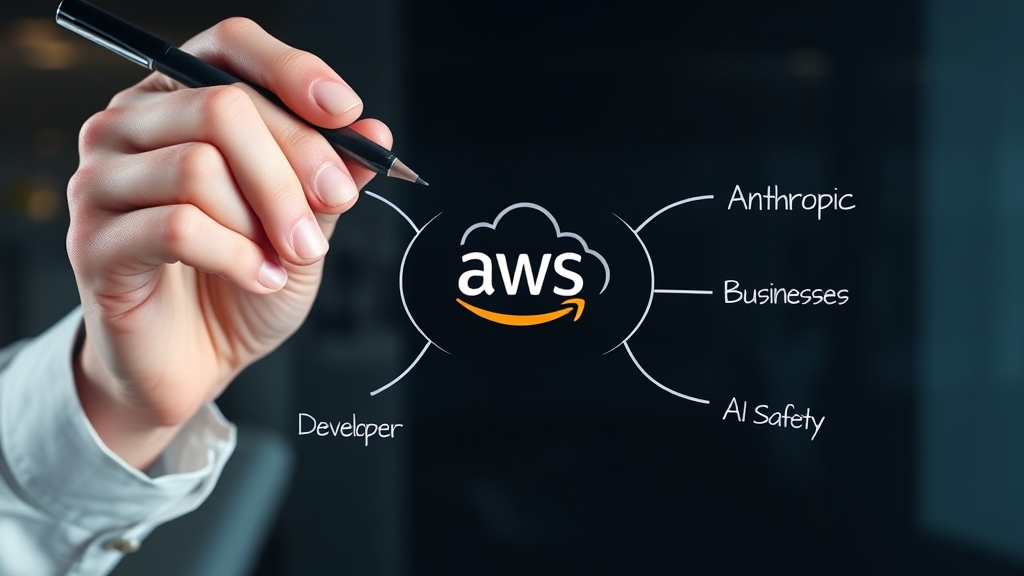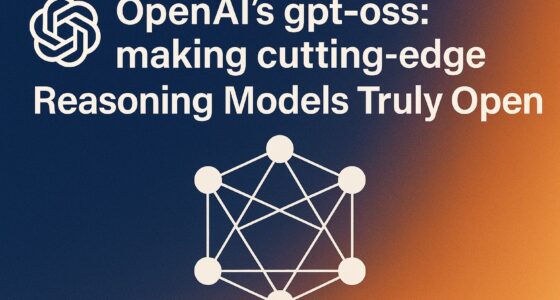The AI landscape just shifted dramatically, and most people have no idea what just happened. While everyone’s been focused on ChatGPT’s latest updates, Anthropic quietly made a move that could reshape artificial intelligence accessibility. Their partnership with AWS embeds Claude directly into AWS Bedrock with native APIs, putting advanced AI capabilities within reach of millions of developers and businesses worldwide. Picture enterprise content moderation systems that actually understand sarcasm and context—applications that seemed impossible just months ago. What does this mean for the future of AI development? And why are industry insiders calling this the most significant partnership announcement of the year? This isn’t your typical cloud collaboration.

The Partnership That Changes Everything
Most cloud partnerships follow a simple formula: one company provides the servers, another provides the software, and customers get access to both. But what Anthropic and AWS have created breaks that mold entirely. This collaboration rebuilds AI infrastructure from the ground up, creating a system where Claude’s advanced reasoning capabilities integrate directly into AWS’s fabric rather than just sitting on top of it. Think of it like the difference between renting a house and actually building one designed specifically for your family’s needs.
The technical architecture behind this integration represents a fundamental shift in how AI models connect with cloud infrastructure. AWS has embedded Claude directly into their Bedrock service, which means developers can access these powerful AI capabilities through the same APIs and tools they already use for database management, storage, and computing. Picture a developer who previously needed weeks to figure out how to connect their application to an AI model, manage authentication, handle rate limiting, and build failover systems. Now they can add Claude’s capabilities to their app with the same ease as adding a new database connection.
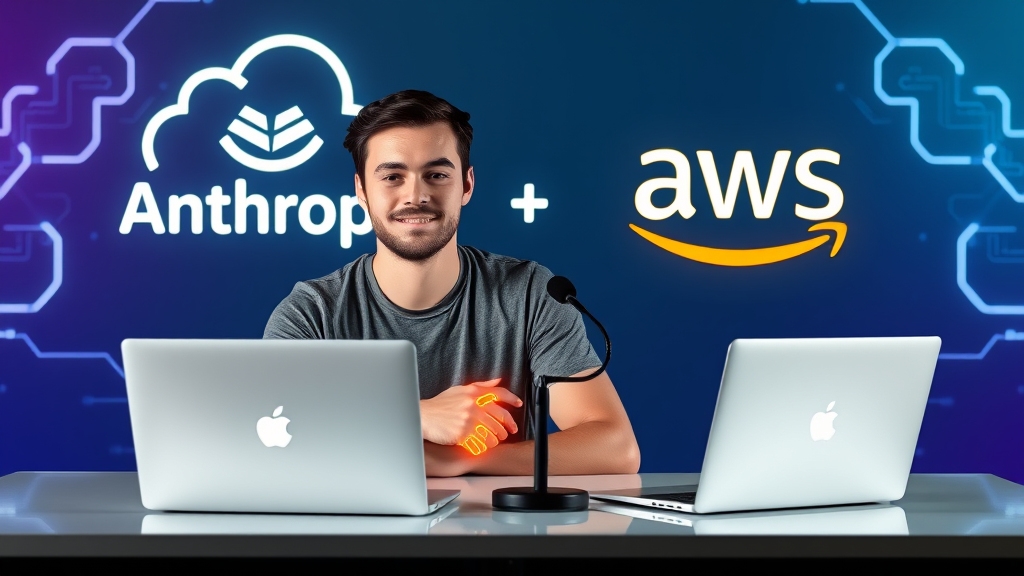
Here’s why this matters so much: most companies have powerful AI models, but very few can actually use them effectively. The gap between having access to advanced AI and deploying it reliably has been enormous. Small development teams would spend months building custom infrastructure just to handle basic AI integration, while enterprises would abandon AI projects because the deployment complexity outweighed the potential benefits. This partnership eliminates that gap by making Claude as easy to implement as any other AWS service.
The timing of this announcement reveals just how critical the competitive landscape has become. OpenAI’s Microsoft partnership and Google’s integrated cloud approach created formidable ecosystems that left other players scrambling. Anthropic needed AWS’s global reach and enterprise credibility, while AWS needed cutting-edge AI capabilities to compete with their cloud rivals. Both companies faced the reality that going it alone meant falling behind in a market where infrastructure and AI capabilities increasingly determine success.
What can developers actually build now that was impossible before? Consider real-time language translation services that can handle nuanced conversations across dozens of languages while maintaining context and cultural sensitivity. Previously, this required massive infrastructure investments and custom model training. Now a small team can build this functionality over a weekend using Claude’s advanced language understanding combined with AWS’s global network. Take a development team in São Paulo that can now create a sophisticated real-time translator with the same low latency and reliability as their Silicon Valley counterparts, accessing Claude’s capabilities through AWS’s regional infrastructure. Or think about sophisticated content moderation systems that can understand context, sarcasm, and cultural references rather than just flagging keywords. These applications require the kind of advanced reasoning that Claude provides, but they also need the reliability and scale that only established cloud infrastructure can deliver.
The economic implications extend far beyond just lower hosting costs. Before this partnership, advanced AI capabilities were essentially reserved for companies with substantial technical teams and infrastructure budgets. A startup wanting to build AI-powered features would need to hire specialized engineers, negotiate complex enterprise contracts, and invest heavily in infrastructure before writing a single line of application code. Now that same startup can prototype and deploy AI features with the same ease and cost structure as building a standard web application. This dramatic reduction in barriers means we’ll likely see an explosion of AI-powered applications from unexpected sources.

AWS’s global infrastructure network suddenly makes Claude available in regions where Anthropic could never have established a presence independently. We’re talking about deployment across over 80 availability zones in more than 25 geographic regions. For a company focused on AI research and development, building this kind of global infrastructure would have taken years and billions of dollars. But through this partnership, a developer in São Paulo can access the same Claude capabilities as someone in Silicon Valley, with the same low latency and high reliability.
Reliability represents one of the biggest concerns enterprises have expressed about AI deployment. Many companies have experimented with AI tools only to discover that inconsistent performance and unexpected downtime make them unsuitable for critical business processes. AWS brings decades of experience running mission-critical infrastructure with uptime guarantees that meet enterprise standards. Their infrastructure handles millions of requests per second across thousands of different services, with redundancy and failover systems that most AI companies simply can’t match independently.
This partnership positions both companies to capture the massive enterprise market that has remained largely untapped due to infrastructure concerns. Enterprise customers don’t just want powerful AI models; they need security certifications, compliance guarantees, data residency controls, and integration with existing IT systems. AWS already provides all of these enterprise features for their other services. By making Claude available through the same infrastructure, Anthropic gains instant access to enterprise customers who would have never considered working with a standalone AI company, regardless of how advanced their models might be.
The ripple effects extend to how other companies approach AI development and deployment. Smaller AI companies now face the reality that competing requires not just better models, but also enterprise-grade infrastructure partnerships. This raises the stakes significantly and likely accelerates consolidation in the AI industry. Meanwhile, other cloud providers must respond with their own AI partnerships or risk losing customers to AWS’s newly enhanced AI offerings.
What makes this partnership particularly interesting is how it changes the economics of AI experimentation and development. Researchers and developers can now test ideas and build prototypes using state-of-the-art AI capabilities without significant upfront investment. This accessibility could accelerate AI research by allowing more people to experiment with advanced capabilities and discover new applications. When powerful tools become widely accessible, innovation often comes from unexpected directions.
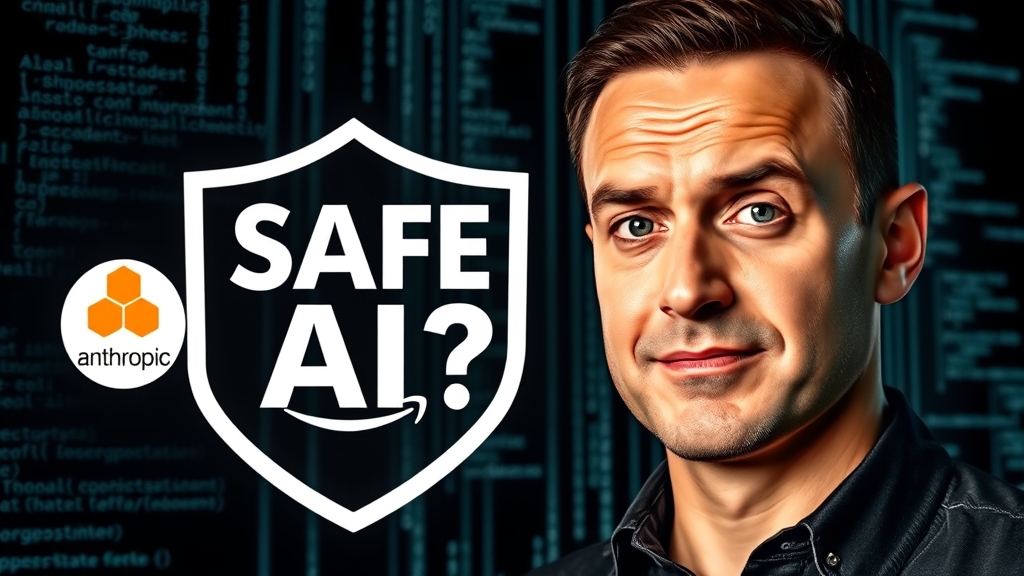
The integration also creates new possibilities for hybrid AI applications that combine Claude’s capabilities with other AWS services. Imagine applications that use Claude for natural language processing, AWS’s computer vision services for image analysis, and their database services for storing and retrieving information, all working together seamlessly. This kind of multi-service integration was technically possible before, but the complexity of managing different APIs, authentication systems, and billing structures made it impractical for most developers.
This transformation represents something much bigger than a business partnership between two technology companies. We’re witnessing the creation of infrastructure that could make AI capabilities as fundamental and accessible as email servers or web hosting. When that happens, the limiting factor for AI-powered innovation shifts from technical infrastructure to human creativity and imagination. But infrastructure is only half the story. The real question becomes whether the AI capabilities themselves can live up to the promise of this expanded accessibility.
Claude’s Breakthrough Capabilities Unveiled
What exactly can Claude’s latest models do that previous generations couldn’t? The answer reveals why this partnership represents such a significant shift in AI capabilities. These aren’t minor upgrades or subtle improvements. We’re looking at fundamental advances that change what’s possible when humans and AI work together on complex problems.

The enhanced reasoning capabilities stand out as the most impressive advancement. Claude can now work through complex multi-step analyses, connecting information across different domains and identifying potential issues that might not be obvious even to experienced professionals. Research shows Claude’s latest version outperforms competitors on multi-step reasoning benchmarks like SnitchBench’s logic tests, demonstrating measurable improvements in handling intricate problem-solving scenarios.
This reasoning improvement shows up in practical ways that matter for real work. When you give Claude a complex business scenario with multiple variables and ask it to work through different outcomes, it doesn’t just provide surface-level analysis. It considers second and third-order effects, identifies potential blind spots, and even suggests alternative approaches you might not have considered. That’s the kind of thinking that was previously reserved for senior consultants and experienced analysts.

The improvements in code generation and debugging represent another major leap forward. Here’s what this means in practice: imagine a developer working on a large e-commerce platform with hundreds of thousands of lines of code spread across multiple repositories. They discover a performance issue that seems to be related to how the system handles user sessions, but the problem touches several different components. Previous AI models might help write individual functions or explain specific code snippets, but they couldn’t maintain context across the entire codebase.
Claude’s latest version can understand the relationships between different parts of a large software system. It can trace how data flows through various components, identify where bottlenecks might occur, and suggest modifications that won’t break existing functionality. When a developer shows Claude a bug report along with relevant code sections, it can often pinpoint not just where the problem is occurring, but why it’s happening and how similar issues might be prevented in the future. This context awareness means developers spend less time explaining background information and more time solving actual problems.
The breakthrough in multimodal understanding opens up entirely new categories of applications. Consider a medical researcher analyzing patient data that includes written reports, X-ray images, and lab results. Previously, you’d need different AI tools for each type of data, and combining insights from different sources required significant manual work. Claude can now process all of these inputs simultaneously, identifying patterns that span across different data types.
The extended context window capabilities solve one of the biggest practical limitations of previous AI models. What does this mean in real terms? You can now upload an entire research paper, legal document, or technical manual and have a conversation about it without losing context. Think about a lawyer reviewing a complex contract that references multiple other agreements, regulations, and precedents. With Claude’s extended context window, they can work through the entire document systematically, asking questions about specific clauses while maintaining awareness of how those clauses relate to everything else in the contract. The AI doesn’t lose track of earlier discussions or miss connections between different sections of the document.

Safety mechanisms and alignment features represent crucial improvements that make these powerful capabilities more trustworthy for professional use. Claude incorporates built-in alignment guardrails that help it decline inappropriate requests while still being helpful for legitimate use cases. This balance matters enormously for enterprise deployment, where companies need AI that’s both capable and predictably safe.
These safety improvements work in subtle but important ways. When Claude encounters a request that might have multiple interpretations, it tends to choose the more constructive and helpful interpretation rather than looking for ways to be technically correct but unhelpful. It also better recognizes when it should acknowledge uncertainty rather than providing confident-sounding answers based on insufficient information.
Creative abilities have expanded in ways that change how people approach content creation and problem-solving. Claude can now help with complex creative projects that require sustained attention and consistency across multiple iterations. A marketing team developing a comprehensive campaign can work with Claude to maintain consistent messaging and tone across different formats and channels, from social media posts to detailed white papers.
What makes this particularly valuable is Claude’s ability to understand and maintain creative constraints while still generating fresh ideas. If you’re working on a brand voice that needs to be professional but approachable, technically accurate but accessible, Claude can generate content that balances these requirements consistently across different contexts and audiences.
Speed and efficiency improvements make all of these capabilities practical for real-world use rather than just impressive demonstrations. Response times have decreased significantly while quality has improved, which means these advanced features work smoothly in interactive workflows. You don’t have to wait several minutes for complex analysis or worry about timeouts when processing large documents.
The benchmark improvements tell a concrete story about these advances. Claude’s performance on complex reasoning tasks has improved substantially, with particularly strong gains in areas like mathematical problem-solving, logical reasoning, and reading comprehension. More importantly, these benchmark improvements translate into noticeable differences in real-world applications. Tasks that previously required multiple iterations and significant human oversight now often work correctly on the first attempt.

These capabilities are already changing how professionals approach their work across different industries. Software developers are using Claude to understand and modify codebases faster than before. Researchers are analyzing complex datasets more efficiently. Content creators are producing higher-quality work with less effort. Legal professionals are reviewing documents more thoroughly in less time.
What we’re seeing represents a fundamental leap in what AI can reliably accomplish in professional settings. These advances move beyond impressive demos to practical tools that enhance human capabilities in meaningful ways. The combination of better reasoning, improved code understanding, multimodal processing, extended context, enhanced safety, creative abilities, and practical speed creates something qualitatively different from previous AI generations. But having powerful capabilities is only half the equation. The real transformation happens when these tools become accessible to the people who can put them to work.
The Developer Revolution
Picture a developer six months ago trying to add AI features to their mobile app. They’d spend days reading through complex API documentation, then weeks building custom integrations to handle authentication, rate limiting, and error recovery. The costs were brutal too—most advanced AI models charged per token or API call, making it expensive to even test basic functionality. Many developers would prototype an AI feature only to discover that scaling it to real users would cost more than their entire server budget. What should have been an exciting addition to their app became a frustrating technical challenge that often ended in abandonment.
AWS has transformed this experience completely. Developers can now access Claude through the same console, APIs, and tools they already use for databases, storage, and computing resources. Adding AI capabilities to an application now feels as straightforward as setting up a new database connection or configuring a content delivery network. The familiar AWS interface means developers don’t need to learn entirely new workflows or authentication systems. They can manage their AI features alongside all their other cloud resources in one place.
The pre-built integrations and SDKs eliminate most of the custom development work that previously consumed weeks of engineering time. AWS provides ready-made code libraries for popular programming languages that handle all the infrastructure complexity behind the scenes. A developer can now add sophisticated natural language processing to their application with just a few lines of code. The SDK handles authentication, error recovery, scaling, and monitoring automatically. This means development teams can focus their energy on building unique features for their users instead of recreating the same AI infrastructure that every other team needs.
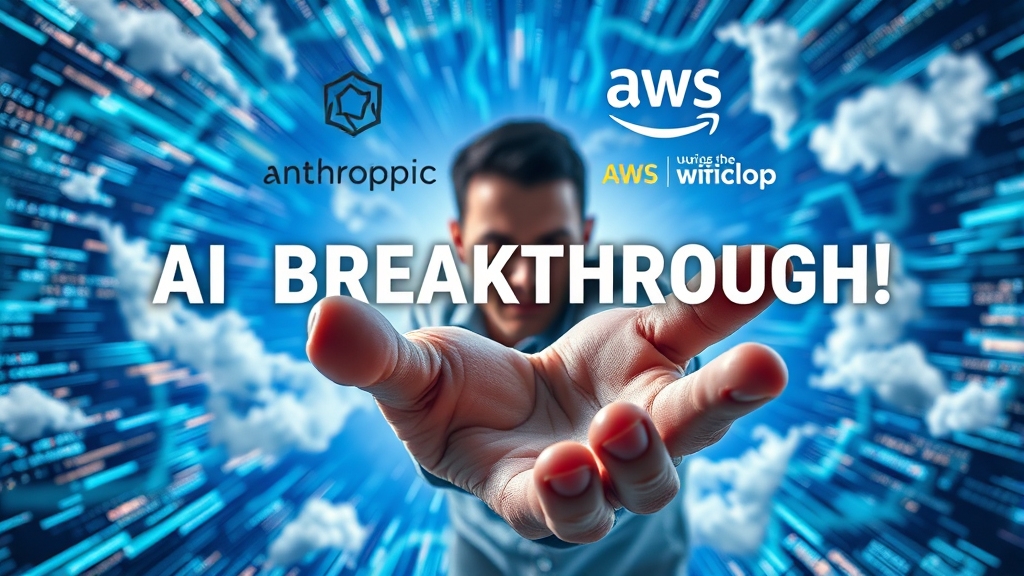
Real development teams are already building applications that would have been impossible or impractical just months ago. A small startup created a customer service platform that can handle complex technical support conversations in multiple languages, maintaining context across long interactions while escalating appropriately to human agents when needed. Before this partnership, building such a system would have required a team of AI specialists, months of custom infrastructure development, and substantial upfront costs just to test the concept.
Another team built a code review tool that can understand entire software projects, not just individual files. Their application analyzes code changes in context, suggesting improvements that consider the broader system architecture and existing patterns. The AI can spot potential security issues, performance problems, and maintainability concerns that traditional static analysis tools miss. Building this required Claude’s advanced reasoning capabilities combined with reliable, fast infrastructure that could handle large codebases without timeouts or failures.
Consider the innovation happening in content creation tools. One developer built an automated video editing system that can analyze hours of raw footage and create polished highlight reels with intelligent scene transitions and music synchronization. The tool automatically identifies the most engaging moments in streams or recordings, then assembles them into coherent narratives that maintain viewer interest. This kind of sophisticated content analysis and generation was previously the domain of expensive enterprise software, but now individual creators can access these capabilities through simple API calls.
The cost structure changes make these innovations accessible to organizations that could never afford them before. Instead of paying high per-token fees that made experimentation expensive, developers now work within AWS’s familiar pricing model that scales predictably with usage. A startup can begin testing AI features with minimal monthly costs, then scale their usage as their application grows. This pricing approach removes the financial risk that previously prevented many teams from exploring AI capabilities.
Small businesses can now compete with tech giants in building AI-powered features. A local marketing agency can offer sophisticated content analysis and generation services that rival what larger companies provide. They don’t need to hire AI specialists or negotiate enterprise contracts with AI providers. The AWS infrastructure handles scaling automatically, so they can focus on serving their clients rather than managing technical infrastructure.

Rapid prototyping becomes possible when you can test AI features without significant upfront investment. Developers can try multiple approaches to a problem, iterating quickly based on user feedback. A mobile app developer can experiment with different ways of implementing AI-powered search, testing various approaches with real users to see what works best. The ability to prototype quickly and cheaply means more ideas get tested, leading to better products and more innovation.
The partnership enables better debugging and monitoring through AWS’s established developer tools. CloudWatch dashboards show AI usage patterns alongside traditional metrics like server performance and database queries. Developers can track how their AI features affect overall application performance, identify bottlenecks, and optimize their implementation. When something goes wrong, the same logging and alerting systems they use for other parts of their application work for AI features too.
This integration creates a more comprehensive view of application health. Instead of AI being a black box that either works or doesn’t, developers can see detailed metrics about response times, error rates, and usage patterns. They can set up alerts when AI performance degrades and automatically scale resources when usage increases. This visibility makes AI features more reliable and maintainable in production environments.
The community effects are becoming visible as more developers gain access to these capabilities. GitHub repositories with AI-powered features are growing rapidly, and developers are sharing code examples, best practices, and creative applications. Online communities are filled with developers helping each other implement AI features, sharing solutions to common problems, and collaborating on open source tools that make AI integration even easier.
Educational opportunities expand dramatically when financial barriers disappear. Computer science students can now build sophisticated AI applications as part of their coursework without their universities needing expensive enterprise contracts. Coding bootcamps can include AI integration in their curriculum, preparing graduates for a job market where AI skills are increasingly valuable. Independent developers can learn by building real projects instead of just reading documentation.
Self-taught programmers and developers from regions with limited access to expensive technology resources can now build applications that compete globally. A developer in a small town can create AI-powered tools that serve users worldwide, using the same infrastructure and capabilities available to teams in major tech hubs.
The landscape shift is profound. We’re witnessing the democratization of AI development, where innovative ideas matter more than infrastructure budgets. A creative solution to a real problem can now be built and deployed quickly, regardless of whether it comes from a tech giant or a solo developer working from their kitchen table. This levels the playing field in ways that could reshape entire industries, as the best ideas win regardless of the resources behind them.
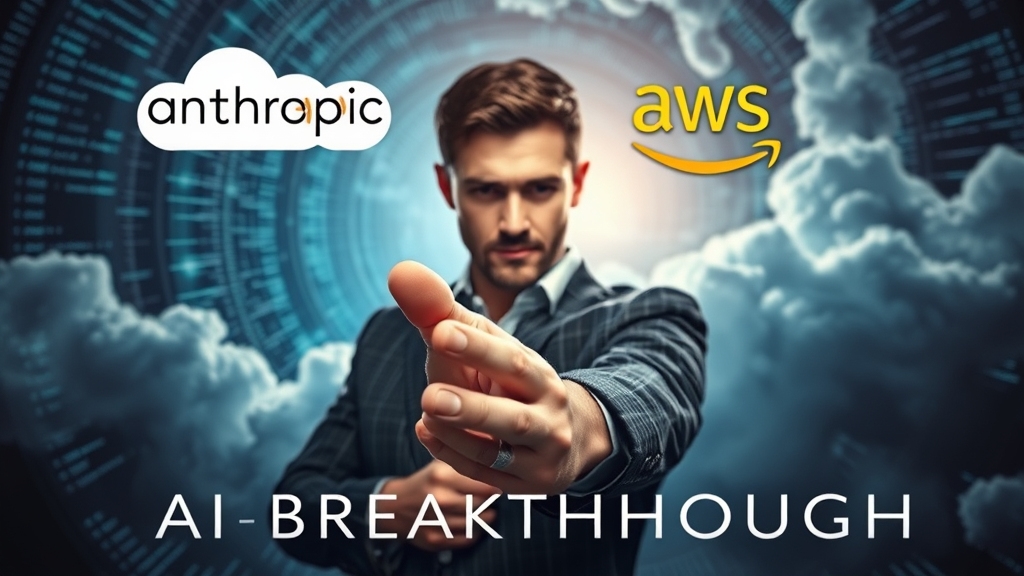
But individual developers and startups represent just one part of this transformation. The real test of this partnership’s impact comes when we examine how it affects the organizations that have been watching AI developments with intense interest but have remained hesitant to commit.
Enterprise AI Adoption Accelerates
Most enterprises have spent the last few years watching AI developments with fascination and frustration in equal measure. They see the potential for transformative applications but face overwhelming barriers when it comes to actual deployment. Security concerns top the list—how do you protect sensitive customer data when using AI models hosted by third parties? Compliance requirements create another layer of complexity, especially for companies in regulated industries like healthcare and finance. Then there’s the reliability question: can AI systems handle the consistent performance demands that enterprise operations require? These concerns have kept many companies in a perpetual state of AI experimentation without real deployment.
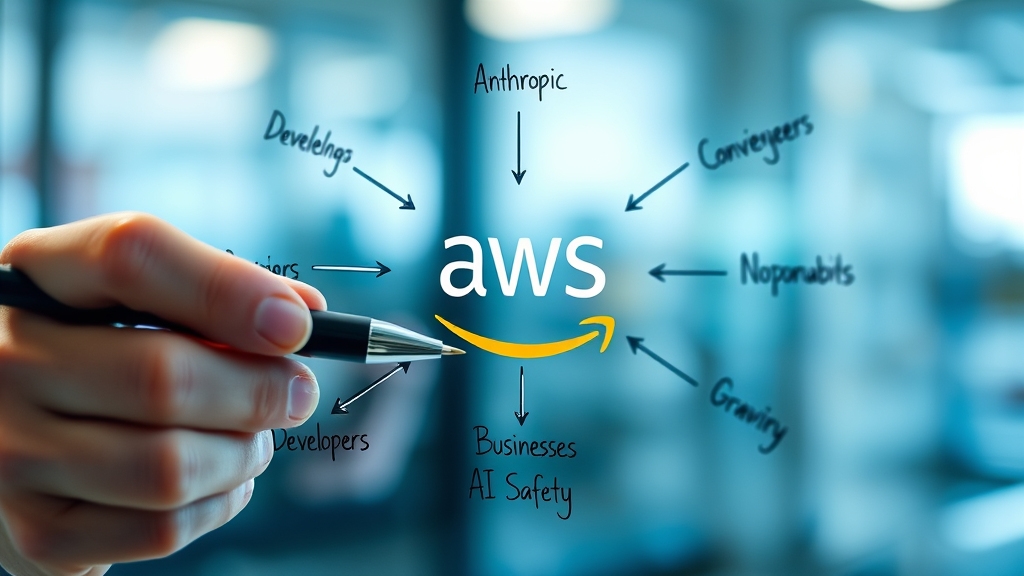
AWS’s enterprise-grade security and compliance certifications directly address the regulatory and privacy concerns that have paralyzed many companies. When you’re a hospital system considering AI for patient data analysis, you need HIPAA compliance guarantees, not just promises. Financial institutions require PCI DSS certification for any system that touches payment data. Government contractors need FedRAMP authorization before they can even consider new technology platforms. AWS provides all of these certifications and more, creating a foundation of trust that standalone AI companies simply cannot match. This means enterprises can deploy AI applications while maintaining their existing compliance status and security standards.
The impact becomes visible when you look at specific industry applications already benefiting from this partnership. Healthcare organizations are using Claude to analyze complex medical records, identifying patterns across thousands of patient files that human analysts might miss. A major hospital network recently implemented a system that reviews discharge summaries and medication lists, flagging potential drug interactions and suggesting follow-up care protocols. Financial institutions are applying these capabilities to risk assessment, with investment firms using Claude to analyze market research reports, earnings calls, and regulatory filings simultaneously to create comprehensive risk profiles. These applications require both sophisticated AI capabilities and rock-solid infrastructure reliability.

The scalability approach removes one of the biggest barriers to enterprise AI adoption: the fear of making the wrong architectural choices early on. Companies can start with small pilot projects using the same infrastructure that will support full-scale deployment later. A manufacturing company might begin by using AI to analyze quality control reports from a single production line, then expand to multiple facilities without rebuilding their entire system. This gradual scaling approach lets enterprises learn what works for their specific needs while avoiding the massive upfront investments that traditional AI deployments required.
AWS’s elastic infrastructure means companies can handle sudden increases in AI usage without manual intervention. During peak business periods, the system automatically allocates more computing resources to handle increased demand, then scales back down during quieter times. This flexibility prevents the over-provisioning that wastes money and the under-provisioning that leads to system failures when you need AI capabilities most.
Integration capabilities prove crucial for enterprises with existing software ecosystems worth millions of dollars. Claude doesn’t replace these systems—it enhances them through APIs and pre-built connectors that work with popular enterprise applications. A retail company can integrate AI-powered customer service capabilities with their existing CRM system, help desk software, and inventory management tools. The AI accesses information from these systems to provide better customer support without requiring employees to learn entirely new workflows or abandon familiar tools.
Customer service representatives continue using the same ticketing system they’ve always used, but now they have AI-powered suggestions for resolving complex issues. Sales teams keep their familiar CRM interface while gaining AI insights about customer behavior and preferences. Marketing departments use the same campaign management tools but with AI-generated content suggestions and performance predictions. This integration approach maximizes the value of existing technology investments while adding new capabilities.
Early adopters are reporting significant productivity gains and cost savings that demonstrate the real business value of this infrastructure. A legal firm reduced document review time by 60% using Claude to analyze contracts and identify key terms, freeing lawyers to focus on higher-value advisory work. An insurance company automated 40% of their claims processing workflow, reducing processing time from days to hours while improving accuracy. A consulting firm uses AI to research industry trends and prepare client presentations, allowing their consultants to serve more clients without expanding their research staff.
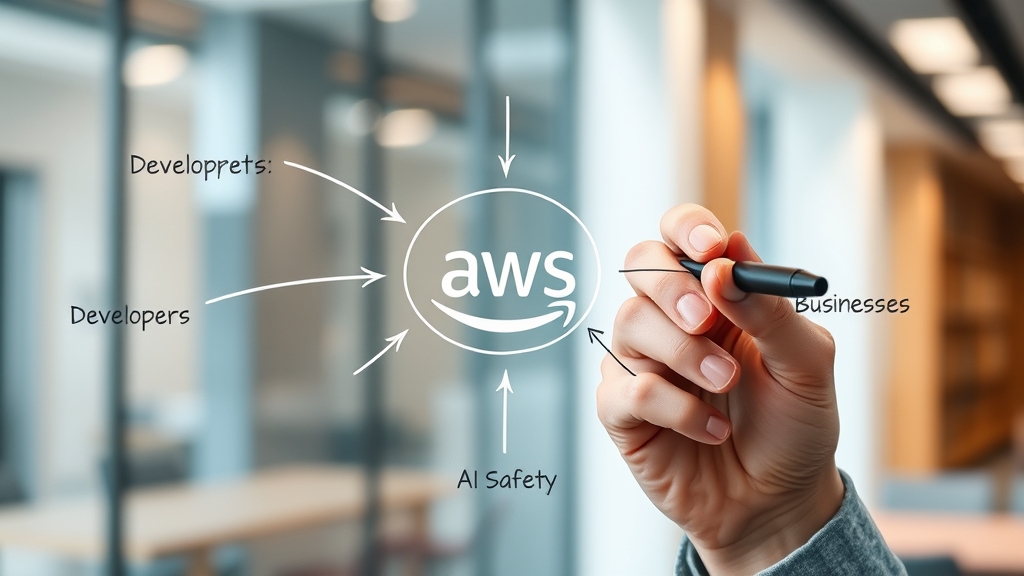
These productivity improvements translate into measurable cost savings. Companies reduce the need for temporary staff during busy periods because AI handles increased workloads automatically. They avoid hiring specialized roles for tasks that AI can now perform. Travel and training costs decrease when AI provides expertise that previously required bringing in external consultants or sending employees for specialized training.
Competitive advantages emerge when enterprises can deploy advanced AI capabilities without building specialized teams from scratch. While competitors spend months recruiting AI engineers and data scientists, companies using this partnership can implement sophisticated AI features immediately. They gain first-mover advantages in their markets while competitors are still assembling their AI teams. Small and medium enterprises especially benefit, as they can now compete with larger companies that have bigger technology budgets and more specialized staff.
Risk mitigation becomes manageable through AWS’s proven infrastructure reliability. The platform includes automatic backup systems, failover capabilities, and disaster recovery procedures that meet enterprise requirements. Companies get service level agreements that guarantee uptime percentages, with financial penalties if those guarantees aren’t met. Redundant systems across multiple geographic regions ensure that AI services remain available even during major infrastructure problems, with traffic automatically routing to backup systems in other locations when needed.
The talent shortage problem gets solved through managed services that eliminate the need for specialized AI infrastructure teams. Companies can deploy sophisticated AI applications without hiring machine learning engineers, data scientists, or AI infrastructure specialists. AWS handles the complex technical details while enterprise teams focus on applying AI to their specific business problems. Companies can launch AI initiatives with their existing IT staff, who already understand AWS services and can apply that knowledge to AI deployments.

What we’re witnessing represents a fundamental shift in enterprise technology adoption patterns. The infrastructure barriers that kept enterprises on the sidelines are dissolving rapidly. Companies that have been cautiously observing AI developments can now move quickly from pilot projects to full deployment. But this transformation extends far beyond just making AI more accessible to individual companies. The strategic implications of this partnership are reshaping the entire competitive landscape in ways that will define how technology companies position themselves for the next decade.
The Competitive Battlefield Reshapes
Other AI companies now face entirely new competitive pressures that extend far beyond traditional model performance comparisons. Companies like Cohere and Stability AI suddenly find themselves competing not just against individual rivals, but against integrated partnerships that combine cutting-edge research with enterprise-grade infrastructure. When two industry giants combine their strengths like this, it creates ripple effects that force everyone else to reconsider their strategies.
These companies have limited options moving forward. They can try to build their own infrastructure, which takes years and billions of dollars. They can partner with other cloud providers, but those relationships won’t have the same integration depth that Anthropic achieved with AWS. Or they can focus on specialized niches where infrastructure matters less, essentially conceding the broader enterprise market. None of these options are particularly appealing for companies that had bigger ambitions.

The advantages this gives Anthropic in the enterprise race are substantial and specific. When a Fortune 500 company evaluates AI providers, reliability and scale often matter more than marginal improvements in model performance. Anthropic can now promise enterprise customers service level agreements that guarantee 99.9% uptime with automatic failover capabilities—the same infrastructure reliability standards that enterprises expect from their other critical business systems. They can provide disaster recovery, audit trails for regulatory compliance, and the kind of enterprise support that procurement departments require.
Think about a major bank considering AI for fraud detection. They need systems that can process millions of transactions without fail, maintain perfect uptime during peak periods, and provide complete audit trails for regulatory compliance. Before this partnership, choosing Anthropic meant accepting infrastructure risks that most enterprises couldn’t tolerate. Now they get cutting-edge AI capabilities with enterprise-grade infrastructure guarantees. That combination is extremely difficult for competitors to match.
AWS gains equally significant advantages by differentiating itself from Microsoft Azure and Google Cloud through exclusive access to Anthropic’s capabilities. Cloud providers have been racing to offer unique AI services that lock customers into their platforms. Microsoft has OpenAI integration, Google has their own AI models, and now AWS has Claude. This creates competitive pressure where each cloud provider needs exclusive AI partnerships to remain competitive for customers who want integrated AI solutions.
The exclusivity creates powerful competitive barriers. Other cloud providers can’t simply add Claude to their offerings. They need to find other AI partners or build their own capabilities. Meanwhile, AWS customers get streamlined access to advanced AI without switching platforms or managing multiple vendor relationships. This stickiness factor makes it harder for competitors to win enterprise customers who are already invested in AWS infrastructure.

Major tech companies are already responding with their own strategic moves. Microsoft is deepening their OpenAI integration and investing heavily in competing AI capabilities. Google is accelerating development of their AI offerings and likely seeking their own exclusive partnerships. Oracle, IBM, and other enterprise technology companies are scrambling to secure AI partnerships that give them competitive advantages. We’re seeing the beginning of an AI alliance arms race that will reshape partnerships across the entire technology industry.
These responses won’t happen overnight, and that timing advantage matters enormously. While competitors spend months negotiating partnerships and integrating systems, Anthropic and AWS are already serving enterprise customers and learning from real-world deployments. They’re building market share and customer relationships while others are still planning their responses. This head start could translate into lasting competitive advantages.
The partnership creates new competitive barriers that extend beyond just technology. AWS and Anthropic can now coordinate their sales teams, marketing efforts, and customer support in ways that standalone companies cannot match. They can offer bundled pricing, integrated support, and unified account management that simplifies the vendor relationship for enterprise customers. Replicating this level of integration requires deep partnerships that take significant time to develop and implement.
Global market implications multiply these competitive advantages. Anthropic gains instant access to AWS’s presence in markets where they had no infrastructure. A company in Southeast Asia can now access Claude with the same reliability and performance as users in Silicon Valley. Meanwhile, competitors face the challenge of building global infrastructure or finding partners in each region where they want to compete. This global reach requirement raises the stakes and costs for anyone trying to compete at enterprise scale.
The innovation acceleration benefits both companies in ways that create additional competitive advantages. Anthropic can focus their engineering resources on improving AI capabilities rather than building infrastructure. AWS can leverage Anthropic’s AI expertise to enhance their other services and develop new offerings. This specialization allows both companies to move faster than competitors who are trying to build everything themselves.
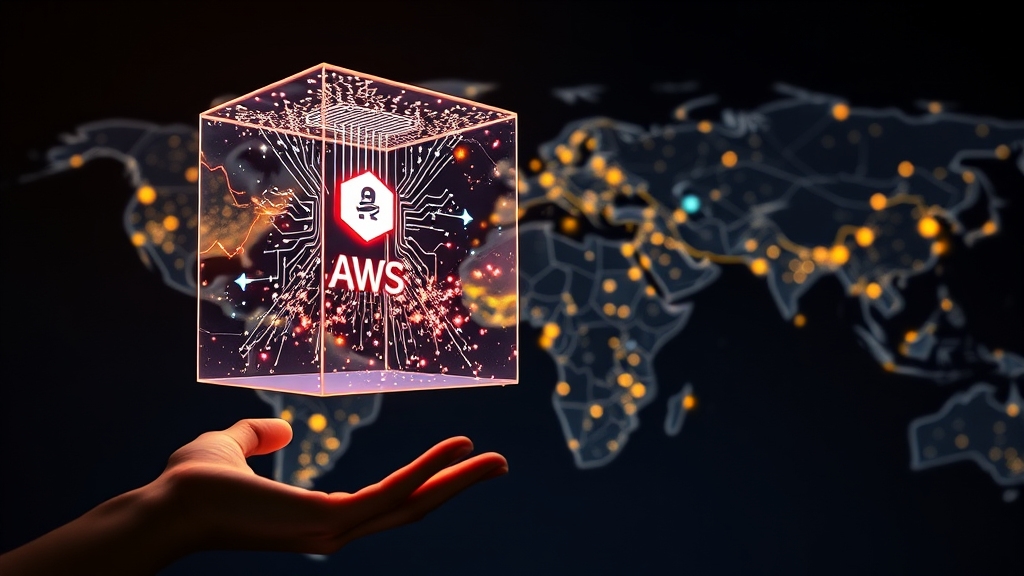
Smaller AI companies face a harsh new reality in this competitive landscape. What happens to startups that can’t match these alliances? They now compete not just against other startups or individual large companies, but against partnerships that combine cutting-edge AI research with massive infrastructure capabilities. The barriers to enterprise-scale competition have increased dramatically. Venture capitalists are already adjusting their investment strategies, recognizing that AI startups need either exceptional differentiation or clear partnership paths to compete effectively.
The consolidation pressure on smaller players will likely accelerate. Companies that might have remained independent in the previous competitive environment may now seek acquisition by larger partners who can provide the infrastructure scale they need. This could lead to a more concentrated AI industry with fewer independent players and more integration between AI companies and cloud infrastructure providers.
Market dynamics are shifting toward AI-cloud alliances as the primary competitive structure. Success increasingly depends on having both advanced AI capabilities and enterprise-grade infrastructure. Companies that excel in one area but lack the other face significant disadvantages. This pushes the industry toward partnerships and consolidation as the most viable competitive strategy.
What we’re witnessing represents the formation of AI-cloud alliances that will define technology competition for the next decade. The companies that succeed will be those that combine cutting-edge AI research with enterprise-grade infrastructure and global scale. But this rapid expansion of AI capabilities and accessibility raises questions that go far beyond just competitive positioning.
AI Safety at Scale
Making powerful AI accessible to millions of users creates safety challenges that no company has faced before. When Claude was limited to Anthropic’s own infrastructure, they could monitor every interaction and maintain tight control over how their models were used. Now we’re talking about deployment across AWS’s massive global network, where countless developers will integrate these capabilities into applications serving billions of users. The scale changes everything about safety considerations.

Anthropic’s Constitutional AI approach provides the foundation for maintaining safety guardrails even at this massive scale. Think of Constitutional AI as building a moral compass directly into the AI model itself. Instead of relying on external filters or post-processing checks, the AI learns to follow a set of principles that guide its decision-making process through model-level guardrails. These principles cover everything from avoiding harmful content to respecting user privacy to declining requests that could cause harm. What makes this approach particularly effective is that these safety measures work regardless of how the AI is deployed or what application it’s integrated into.
The constitutional principles operate at the model level, which means they scale automatically with AWS’s infrastructure. When a developer in Tokyo uses Claude through AWS, they get the same safety protections as someone in New York. The AI doesn’t just follow safety rules when it’s convenient—these principles are built into how it processes and responds to every request. This consistency becomes crucial when you’re dealing with millions of interactions across different cultures, languages, and use cases.

AWS provides monitoring and auditing capabilities that give unprecedented visibility into AI usage patterns across their platform. CloudWatch can detect anomaly patterns that might indicate coordinated misuse, while automated safety interventions can identify and respond to potential problems faster than human moderators ever could. This level of monitoring was impossible when AI companies operated independent infrastructure, but AWS’s established logging and analytics systems make comprehensive oversight practical.
The shared responsibility model clarifies exactly who handles what aspects of AI safety. Anthropic maintains responsibility for the core safety features built into Claude itself—the constitutional principles, content filtering, and fundamental alignment with human values. AWS handles infrastructure-level security, monitoring suspicious usage patterns, and providing tools that help developers deploy AI safely. Developers bear responsibility for how they use the models, what data they provide as input, and ensuring their applications comply with relevant regulations and ethical standards.
This division of responsibility works because each party focuses on what they do best. Anthropic concentrates on AI safety research and building those safety features into their models. AWS leverages their experience with enterprise security and compliance to provide robust infrastructure protections. Developers can focus on building great applications while relying on safety features that are already built into the foundation they’re working with.

New safety features become possible when you combine Anthropic’s safety research with AWS’s enterprise-grade security infrastructure. Content filtering operates at multiple levels—within the AI model itself, at the infrastructure layer, and through application-specific controls that developers can configure. Usage monitoring provides real-time insights into how AI capabilities are being used across different applications and geographies. These safety measures work in practice through concrete examples that show their effectiveness.
A customer service application can use Claude to handle complex support requests while automatically blocking attempts to generate inappropriate content. Usage monitoring identifies applications that consistently trigger safety warnings, allowing AWS to work with those developers to improve their implementations. Automated interventions can temporarily restrict access for applications that exceed safety thresholds, preventing potential harm while giving developers time to address issues.
Transparency and explainability improve significantly through better integration between AI models and deployment infrastructure. AWS’s logging systems capture detailed information about how AI models make decisions, what safety measures activate during different interactions, and why certain requests get filtered or modified. This visibility helps developers understand how safety features affect their applications and gives enterprise customers the audit trails they need for compliance purposes.

The improved transparency means organizations can actually see how AI safety measures work in their specific context. A healthcare organization can verify that patient data remains protected throughout AI interactions. A financial services company can demonstrate to regulators that their AI applications follow required safety protocols. This level of transparency builds trust and enables broader adoption of AI in sensitive industries.
This partnership enables better research into AI safety by providing real-world deployment data at unprecedented scale. Anthropic’s researchers can analyze how their safety measures perform across millions of interactions in diverse real-world contexts. They can identify edge cases that laboratory testing might miss, understand how different cultures and languages affect safety considerations, and develop improved safety measures based on actual deployment experience rather than theoretical scenarios.
The scale of data available through AWS deployment provides insights that were impossible to obtain when AI models had limited deployment. Researchers can study how safety measures perform under different load conditions, how they interact with various types of applications, and how effective they are at preventing different categories of misuse. This data-driven approach to safety research accelerates the development of more effective protection mechanisms.
Both companies have established governance frameworks and ethical guidelines that guide responsible AI deployment. These frameworks address fairness, transparency, accountability, and privacy across all aspects of AI development and deployment. They provide clear standards for how AI systems should behave, what constitutes acceptable use, and how to handle situations where safety concerns arise. The frameworks also establish processes for continuous improvement based on real-world experience and evolving understanding of AI safety challenges.
The governance approach recognizes that AI safety isn’t a one-time achievement but an ongoing responsibility that requires constant attention and improvement. Regular reviews of safety performance, updates to safety measures based on new research, and collaboration with external safety researchers ensure that protection mechanisms evolve as AI capabilities advance.
What this demonstrates is that scaling AI safely requires much more than just building powerful models with safety features. You need safety built into the entire infrastructure stack—from the AI models themselves through the deployment infrastructure to the applications that use these capabilities. The Anthropic-AWS partnership shows how this comprehensive approach works in practice, creating multiple layers of protection that work together to enable safe AI deployment at global scale.
How would you handle misuse detection at scale? The technical solutions are only part of the equation. The real transformation happens when safety infrastructure makes advanced AI capabilities not just accessible, but economically viable for applications that were previously impossible to justify.
The Economics of AI Transformation

The cost structure changes reveal a fundamental shift that goes far beyond simple price reductions. We’re witnessing the creation of an entirely new economic model for AI that makes advanced capabilities accessible to organizations and individuals who could never afford them before. This transformation affects pricing structures, business models, and the very way companies think about integrating AI into their operations.
Traditional AI pricing models charged per token or API call, making it expensive to experiment with ideas or scale applications to real users. A startup testing a customer service chatbot might discover that handling actual user conversations would cost more than their entire monthly budget. The economics became even more challenging as AI models evolved to use reasoning capabilities, which dramatically increased token consumption. Research shows that reasoning models can generate vastly different token amounts—some producing 603 tokens for tasks where simpler models generate only seven tokens, creating cost differences of 30 times or more for the same input.
AWS brings massive economies of scale to AI deployment that individual AI companies could never achieve independently. When you’re processing millions of AI requests across a global network, you can optimize hardware utilization, reduce idle time, and spread infrastructure costs across enormous user bases. These efficiency gains translate into lower costs for everyone using the platform. A small development team benefits from the same cost optimizations that serve Fortune 500 companies, getting enterprise-grade AI capabilities at prices that match their budget constraints.
The token volume explosion has fundamentally broken traditional pricing models. The average AI request has evolved from a few hundred tokens to several thousand tokens minimum, with some applications consuming dramatically more. This “token short squeeze” makes flat-rate subscription models increasingly unsustainable, as advanced AI usage can quickly exceed the revenue generated by fixed monthly fees. The shift from simple chat interactions to AI agents that can run extended workloads has created a thousandfold increase in consumption patterns, representing a phase transition rather than gradual change.
New business models become viable when these economic barriers dissolve. Educational platforms can now offer sophisticated AI tutoring that adapts to individual learning styles and provides custom explanations for complex topics, while small businesses can deploy 24/7 AI-powered customer service that understands context and maintains conversation history. These applications become economically feasible because infrastructure costs remain manageable even when scaling to serve thousands of users simultaneously, creating service quality that previously required hiring additional staff.
The investment implications signal significant changes in how AI companies achieve profitability and sustainability. Traditional AI companies faced enormous infrastructure costs that limited their ability to serve smaller customers profitably. By partnering with AWS, Anthropic can focus their resources on improving AI capabilities rather than building global infrastructure. This specialization creates more efficient business models where each company concentrates on their core strengths, demonstrating a path to sustainable AI businesses that can serve diverse market segments profitably.

Competitive pricing pressure from this partnership forces other AI providers to reconsider their strategies. When one major AI provider can offer advanced capabilities at lower costs through cloud partnerships, competitors must respond or risk losing market share. This competitive dynamic accelerates overall market adoption by making AI more affordable across the industry. Smaller AI companies may need to find their own cloud partnerships or focus on specialized niches where infrastructure advantages matter less.
The democratization of AI development creates opportunities for innovation from unexpected sources. Independent developers and small teams can now build sophisticated applications that compete with products from major technology companies. A solo developer can create AI-powered tools that serve users globally, using the same infrastructure capabilities available to large corporations. This levels the playing field in ways that could produce breakthrough applications from individuals or small teams with creative ideas but limited resources.
The transformation creates network effects where increased adoption drives further cost reductions and capability improvements. As more developers build AI-powered applications, the shared infrastructure becomes more efficient and cost-effective. AWS can optimize their systems based on real usage patterns from thousands of applications, while Anthropic can improve their models based on feedback from diverse real-world deployments. These improvements benefit all users of the platform, creating a virtuous cycle of improvement and cost reduction.
Long-term economic vision points toward AI capabilities becoming as commoditized and accessible as basic computing resources like web hosting or email services. Just as businesses today expect reliable, affordable access to internet connectivity and cloud storage, AI capabilities are moving toward becoming standard business utilities. This commoditization process typically leads to widespread adoption as costs decrease and reliability improves, making AI integration a competitive necessity rather than a luxury option.
What we’re witnessing represents the transformation of AI from a luxury technology available only to well-funded companies to an essential business utility accessible to anyone with innovative ideas. This economic shift changes the fundamental dynamics of technology innovation, where success depends more on creativity and execution than on infrastructure budgets. The partnership model demonstrates how AI companies can achieve sustainable economics while making their capabilities broadly accessible, but this transformation extends far beyond just economic considerations. The real impact becomes visible when we examine how these changes affect access to advanced AI capabilities across different regions and markets worldwide.
Global Expansion and Accessibility
Developers in emerging markets now have the same computational power that was once exclusive to Silicon Valley giants. AWS’s global infrastructure network makes Claude available across over 80 availability zones in 25+ geographic regions worldwide. A developer in Kenya can access the same Claude capabilities as someone in California, with similar response times and reliability. Before this partnership, Anthropic would have needed years and billions of dollars to establish this kind of global presence. They would have had to navigate complex regulatory requirements in dozens of countries, build data centers, establish local partnerships, and hire regional teams. AWS already did this work over the past two decades, creating infrastructure that spans continents and serves millions of users daily.

The localization and compliance benefits that come from AWS’s established presence in different countries create immediate advantages for global AI deployment. Each country has unique data protection laws, privacy regulations, and compliance requirements that AI companies must navigate. Germany has strict GDPR requirements. China has specific data residency rules. India has emerging AI governance frameworks. AWS maintains compliance certifications and legal frameworks in all these regions, meaning Claude can operate within local regulatory requirements from day one. This established compliance infrastructure eliminates years of legal and regulatory work that would have prevented Anthropic from serving international markets independently.
Here’s why this matters for the digital divide: infrastructure has been the primary barrier preventing AI adoption in developing markets. A startup in Bangladesh might have innovative ideas for using AI to improve agricultural yields or streamline local commerce, but they couldn’t access the computational resources and reliable internet connectivity required for advanced AI applications. This partnership changes that equation completely. Developers in emerging markets can now build AI-powered applications that serve local needs while leveraging the same infrastructure that powers applications in developed countries. The cost barriers disappear when you can start small and scale gradually rather than making massive upfront infrastructure investments.
Language and cultural adaptation capabilities become possible when AI models can be deployed closer to diverse user bases. Claude can now process requests in local languages with lower latency because computing happens in regional data centers rather than being routed halfway around the world. This proximity matters enormously for applications that need to understand cultural context, local expressions, and region-specific information. An AI assistant helping with legal questions in Brazil can access local legal databases and understand Portuguese legal terminology with the same sophistication it brings to English-language queries. This localization creates opportunities for AI applications that truly serve diverse global communities rather than just translating Western-centric solutions.

Educational institutions in sub-Saharan Africa are building AI tutoring systems that adapt to local curricula and teaching methods. These applications help address teacher shortages while providing personalized instruction in local languages. Agricultural cooperatives in Latin America are implementing AI systems that provide farming advice based on local climate data, soil conditions, and crop varieties. These applications address real local needs using AI capabilities that were previously inaccessible in these regions.
Small businesses in emerging markets are leveraging AI to compete globally in ways that weren’t possible before. A crafts cooperative in rural India can now use AI to write product descriptions in multiple languages, optimize their online presence for international customers, and provide customer service across different time zones. The AI handles routine inquiries and translations while local artisans focus on creating products. This global reach was previously available only to large companies with substantial international operations and marketing budgets.
The geopolitical implications of making advanced AI more globally accessible affect international technology competition in significant ways. Countries that previously depended on AI capabilities developed elsewhere can now build their own AI-powered applications and services. This reduces technological dependence while fostering local innovation ecosystems. Brazil, Nigeria, and Indonesia can develop AI solutions tailored to their specific needs rather than adapting Western-developed applications. This technological independence strengthens their position in global markets and reduces reliance on AI capabilities controlled by other countries.
However, this global accessibility also creates new competitive dynamics. Countries and regions that previously had limited AI capabilities can now compete directly with established tech hubs. A fintech startup in Kenya can build AI-powered financial services that compete with solutions from Silicon Valley or London. This increased competition benefits consumers worldwide while challenging the dominance of traditional tech centers. The geographic distribution of AI capabilities could lead to more diverse and innovative applications as different cultures and perspectives contribute to AI development.
Educational and research opportunities multiply dramatically for institutions and developers in previously underserved regions. Universities in Africa, Asia, and Latin America can now conduct AI research using the same tools available to institutions in developed countries. Computer science students can experiment with cutting-edge AI models as part of their coursework without their universities needing expensive enterprise contracts or specialized infrastructure. Independent researchers can test hypotheses and publish findings based on experiments using advanced AI capabilities. This democratization of research tools accelerates global AI advancement by including diverse perspectives and research approaches.

Network effects occur when AI capabilities become globally distributed rather than concentrated in a few locations. As more developers worldwide gain access to advanced AI tools, they build applications that create value for users in their regions. These applications generate data and insights that improve AI models for everyone. Local applications teach AI systems about different languages, cultures, and problem-solving approaches. This diversity of training data and use cases makes AI models more robust and capable across different contexts. The network becomes more valuable as it includes more participants from diverse backgrounds and regions.
The transformation extends beyond just technical accessibility to economic opportunity. Entrepreneurs worldwide can now build AI-powered businesses that serve global markets without needing to relocate to traditional tech hubs or secure massive funding for infrastructure development. This geographic democratization of opportunity could reshape the global technology industry by distributing innovation more evenly across continents and cultures.
What happens when you remove the infrastructure barriers that have kept brilliant minds from building their ideas? The answer lies in the applications that developers around the world are already starting to create.
Innovation Unleashed
Brilliant ideas have been sitting on developers’ desks for months, waiting for the right moment to come alive. These aren’t half-baked concepts or wishful thinking. They’re fully formed solutions to real problems, complete with detailed plans and clear value propositions. The only thing missing? Access to AI infrastructure that could make them work without breaking the bank. Picture a healthcare startup that designed an AI system to help rural doctors diagnose rare diseases but couldn’t afford the computing power to run it reliably. Or think about an educational platform that could provide personalized tutoring in dozens of languages but needed AI capabilities that were simply too expensive to implement. These innovations weren’t lacking creativity or market demand. They were waiting for infrastructure barriers to disappear.

Now those barriers are crumbling, and the results are already visible across different industries and applications. Developers are building customer service platforms that understand context across multiple conversations, maintaining awareness of previous interactions while adapting to individual customer preferences. Small businesses are implementing inventory management systems that predict demand patterns, optimize ordering schedules, and reduce waste through AI analysis that was previously available only to major retailers. Content creators are developing tools that help writers research topics, fact-check information, and adapt their writing style for different audiences without losing their unique voice. These applications work because developers can now focus on solving problems rather than building infrastructure.
The acceleration in AI research and development becomes clear when you remove infrastructure constraints from the equation. University researchers can now test hypotheses using advanced AI models without waiting months for computing resources or writing grant proposals to fund infrastructure costs. Graduate students experiment with novel approaches to machine learning problems, iterating quickly based on results rather than planning experiments around limited computing budgets. Independent researchers contribute to open source projects, adding capabilities and improvements that benefit the entire community. This freedom to experiment accelerates discovery because researchers can follow promising leads immediately rather than shelving ideas due to resource limitations.
Cross-industry effects multiply as AI capabilities reach sectors that previously couldn’t justify the investment required for advanced technology. Law firms are building document analysis systems that review contracts for potential issues, identify relevant precedents, and suggest negotiation strategies based on historical outcomes. Agricultural cooperatives implement crop monitoring systems that analyze satellite imagery, weather patterns, and soil conditions to optimize planting schedules and irrigation systems. These industries benefit from AI capabilities that were developed for other purposes but prove valuable when adapted to their specific needs.
The startup ecosystem experiences a fundamental shift as this partnership levels the playing field between innovative small companies and established tech giants. A three-person team can now build AI applications that compete directly with products from companies that have hundreds of engineers and massive infrastructure budgets. They can prototype ideas quickly, test them with real users, and scale successful concepts without needing venture capital for infrastructure development. This democratization means that the best ideas win based on execution and market fit rather than available resources. Startups can compete on innovation and user experience rather than infrastructure capabilities they can’t afford to build independently.
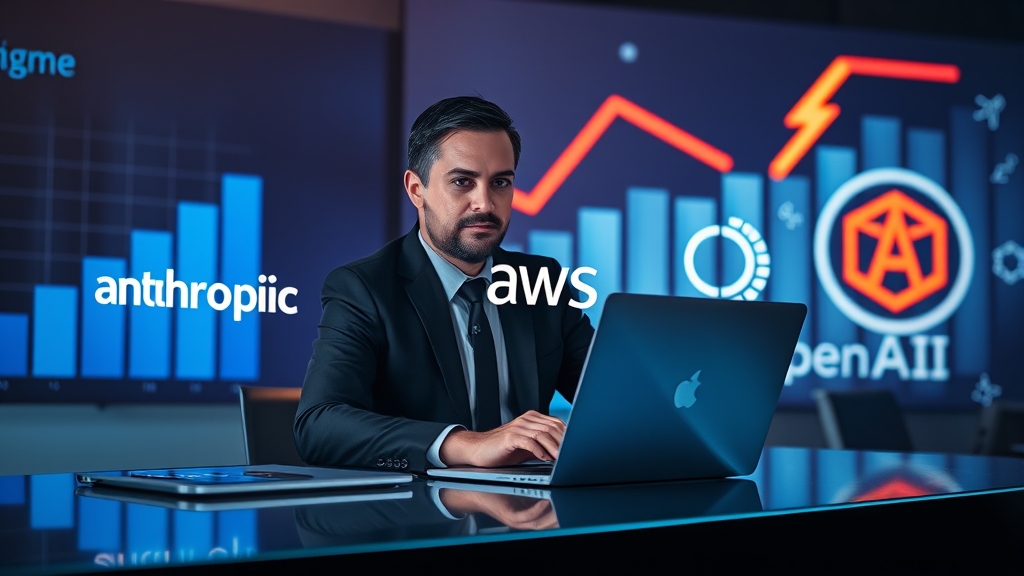
Unexpected and creative applications emerge when powerful AI tools become widely accessible and affordable. Someone built a tool called “marker thing” for taking markers from Twitch streams and converting them into CSV files that work with video editing software, making it easier for content creators to organize and edit their footage. This kind of niche solution addresses specific problems that larger companies might overlook but provides real value to particular communities. Hobby developers create AI-powered tools for managing personal finances, organizing photo collections, or learning new languages. These applications might seem small individually, but they demonstrate how accessible AI tools enable solutions for problems that affect millions of people.
Open source and community development opportunities expand dramatically when more developers can experiment with advanced AI capabilities. Contributors add new features to existing projects, create plugins and extensions that enhance functionality, and share code libraries that make AI integration easier for everyone. Online communities form around specific applications or use cases, with members collaborating on improvements and sharing best practices. This collaborative development accelerates innovation because each contributor builds on work from others, creating compound improvements that benefit the entire community. The shared knowledge base grows as more people experiment with AI tools and document their experiences.
Educational transformation occurs as students, researchers, and hobbyists gain access to professional-grade AI development tools without the financial barriers that previously limited learning opportunities. Computer science students work on realistic projects using the same AI capabilities employed by major companies, gaining practical experience that prepares them for professional careers. Online courses can include hands-on exercises with advanced AI models, making abstract concepts concrete through interactive experimentation. Self-taught developers learn by building real applications rather than just reading documentation, accelerating their skill development and understanding of AI capabilities.
Compound innovation effects create a multiplying impact where each new AI-powered application enables even more sophisticated applications to be built on top. A developer creates an AI tool for analyzing customer feedback, which another developer uses as a component in a comprehensive business intelligence platform, which then becomes the foundation for industry-specific analytics solutions. These layered innovations build on each other, creating increasingly sophisticated capabilities that would be impossible for any single developer or company to create independently. The ecosystem becomes more valuable as each new tool and application adds capabilities that others can leverage.
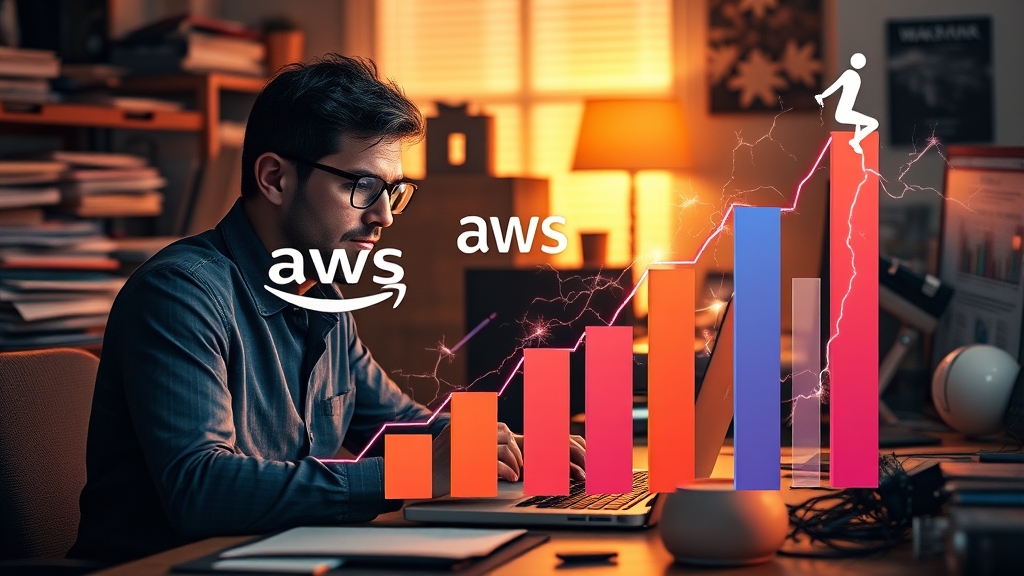
The acceleration extends beyond individual applications to entire industries and research areas. Medical researchers use AI to analyze genetic data, leading to discoveries that enable new AI applications for personalized treatment. Environmental scientists apply AI to climate modeling, generating insights that inform AI systems for sustainable agriculture and renewable energy optimization. Financial analysts develop AI tools for risk assessment, creating models that enable new AI applications for automated trading and fraud detection. Each breakthrough creates opportunities for additional innovations that weren’t previously possible.
We’re moving from a world where infrastructure access determined which ideas could be tested to one where creativity and execution become the primary limiting factors. Developers worldwide can now experiment with cutting-edge AI capabilities, test innovative concepts, and build applications that solve real problems for real users. The geographic and economic barriers that previously concentrated innovation in a few wealthy tech hubs are dissolving, opening opportunities for breakthrough applications to emerge from anywhere. Which untapped idea is waiting on your desk? But individual innovation represents just one dimension of this transformation.
The Future Landscape
The broader implications extend far beyond individual developers and companies. What we’re witnessing is a preview of how AI infrastructure will evolve over the next decade. Just as the internet transformed from a research project to essential infrastructure that powers everything from banking to entertainment, AI is following a similar path at a much faster pace. The Anthropic-AWS collaboration shows us what happens when AI capabilities become as fundamental to business operations as email servers or databases. This isn’t just about making AI more accessible today. It’s about creating the foundation for a world where AI integration becomes so seamless that we stop thinking about it as separate technology.

The technological convergence trends that this partnership accelerates point toward a future where AI processing happens everywhere simultaneously. Edge computing integration means AI capabilities will run on smartphones, smart cars, and IoT devices rather than requiring constant connections to distant data centers. Consider autonomous vehicles that can process traffic patterns, weather conditions, and road hazards instantly without waiting for responses from remote servers. These applications require the kind of distributed AI infrastructure that becomes possible when advanced models can run efficiently on various types of hardware. Real-time AI processing becomes practical when you can deploy sophisticated models closer to where they’re needed, reducing latency and improving reliability for critical applications.
How does easier deployment influence the direction of AI research and capability development? When researchers don’t need to worry about infrastructure limitations, they can focus on solving harder problems and exploring more ambitious applications. Scientists working on climate modeling can test complex hypotheses using AI models that process massive datasets without infrastructure constraints. Medical researchers can experiment with AI systems that analyze genetic information, medical images, and patient records simultaneously. This freedom to experiment with resource-intensive approaches accelerates breakthroughs that might have taken years longer under previous constraints. The research community can pursue ideas based on their scientific merit rather than their infrastructure requirements.
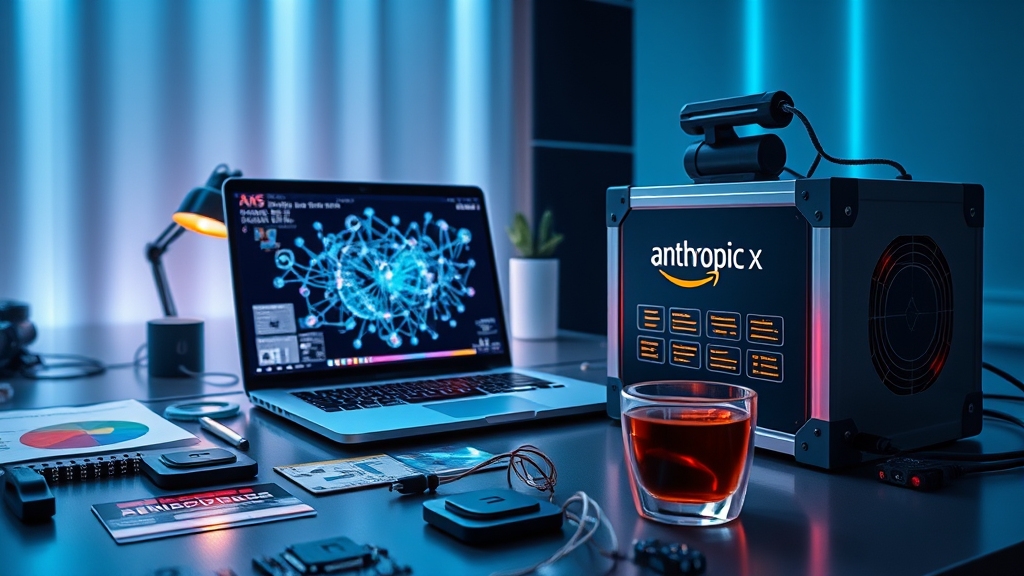
The ecosystem effects from this partnership will likely catalyze similar alliances between AI companies and cloud providers across the industry. We’re already seeing other players respond with their own strategic partnerships and integration efforts. Google is deepening the integration between their AI capabilities and cloud services. Microsoft continues expanding their OpenAI partnership. Oracle, IBM, and other enterprise technology companies are seeking AI partnerships that give them competitive advantages in their markets. This trend toward AI-cloud alliances creates a new competitive structure where success depends on combining cutting-edge AI research with enterprise-grade infrastructure and global reach.
What does this mean for standardization and interoperability across different AI platforms? The partnership model might actually drive more standardization as companies recognize the benefits of making their AI capabilities accessible through familiar development tools and interfaces. Developers benefit when they can use similar approaches to integrate different AI capabilities into their applications. Enterprises prefer solutions that work with their existing technology stacks rather than requiring completely new infrastructure. This pressure for compatibility could lead to industry standards that make AI integration more predictable and reliable across different providers and platforms.
The regulatory and policy implications become significant as AI integrates more deeply into critical infrastructure and everyday applications. Governments are developing AI governance frameworks that address safety, privacy, and fairness concerns. These regulations will likely influence how AI capabilities are deployed and what safeguards are required for different types of applications. The partnership model provides a framework for implementing regulatory compliance at scale, with clear divisions of responsibility between AI companies, cloud providers, and application developers. This structured approach to AI governance could become a template for ensuring responsible AI deployment as the technology becomes more pervasive.

However, this level of AI accessibility and integration into global digital infrastructure brings potential challenges and risks that require careful management. The democratization of advanced AI capabilities means more people and organizations can build powerful applications, but it also means more opportunities for misuse or unintended consequences. Security concerns multiply when AI systems become embedded in critical infrastructure like power grids, transportation networks, and financial systems. Privacy risks increase as AI capabilities make it easier to analyze personal data and extract insights about individual behavior. The challenge lies in maintaining the benefits of accessible AI while implementing safeguards that prevent harmful applications.
The timeline for these changes suggests we’ll see significant developments much sooner than many people expect. Edge AI capabilities are already appearing in smartphones and smart devices, with more sophisticated applications emerging over the next two years. Enterprise adoption of AI-powered applications will continue growing rapidly as infrastructure barriers disappear and successful use cases demonstrate clear business value. Regulatory frameworks are developing in parallel, with major policy decisions expected within the next few years that will shape how AI integration proceeds.
Key milestones to watch include the expansion of edge AI capabilities to more devices and applications, the emergence of industry-specific AI solutions that address particular business needs, and the development of AI applications that seamlessly integrate multiple capabilities like vision, language, and reasoning. We should also monitor regulatory developments that establish standards for AI safety and governance, competitive responses from other technology companies, and the emergence of new business models enabled by accessible AI infrastructure.
The compound effects of these changes will likely accelerate technological progress in ways that surprise even industry experts. When AI capabilities become as accessible as web hosting or email services, innovation shifts from being limited by infrastructure access to being limited by creativity and execution. This democratization historically leads to breakthrough applications that emerge from unexpected sources and solve problems in novel ways. The combination of accessible AI tools, global infrastructure, and diverse perspectives from developers worldwide creates conditions for rapid innovation that could transform multiple industries simultaneously.
This partnership isn’t just changing how we access AI today. It’s laying the foundation for an AI-integrated future that seemed years away just months ago. The infrastructure, partnerships, and ecosystem effects we’re seeing now will determine how quickly AI becomes embedded in everyday applications and critical systems. What looked like science fiction scenarios are becoming practical development projects that small teams can implement and deploy globally.
If you want to stay ahead of these infrastructure trends and understand how they’ll reshape technology over the next decade, make sure to subscribe for more deep dives into the forces driving AI transformation. The changes we’re witnessing represent something much more significant than incremental improvements to existing technology.
Conclusion
The Anthropic-AWS partnership marks a turning point where AI transforms from experimental technology to critical infrastructure. We’re witnessing AI become as essential as electricity or internet connectivity for modern business operations. This shift accelerates innovation across every industry, making advanced capabilities accessible to anyone with creative ideas.
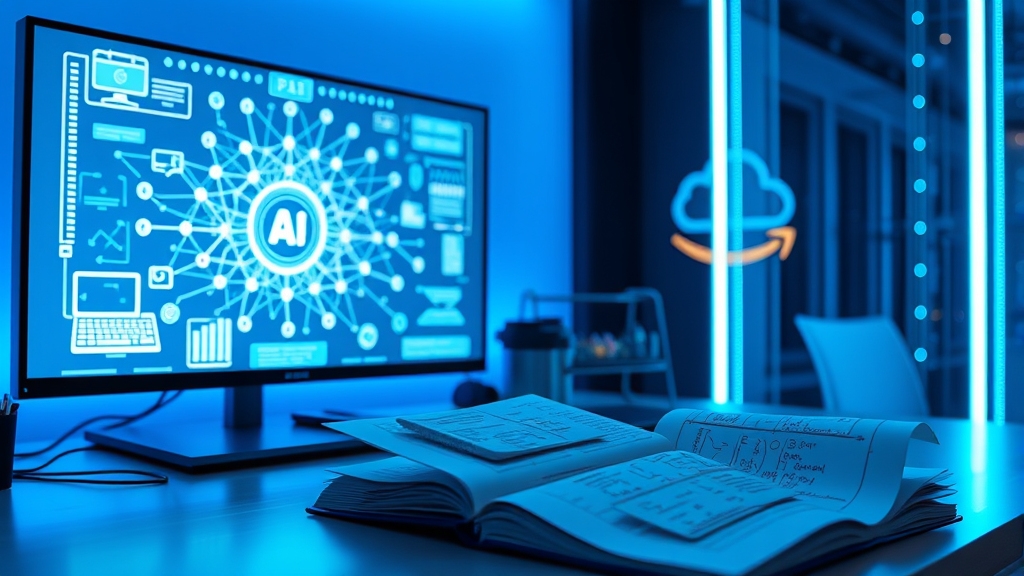
What opportunities could you unlock in your work or projects with these newly accessible AI tools? Whether you’re building applications, solving business problems, or exploring creative projects, these capabilities are now within reach. Drop a comment on how you’d use Claude on AWS in your next project.
Picture a world where AI assistance is as ubiquitous as search engines today. That future arrives faster than expected, transforming how we work and create in ways we’re just beginning to understand.
If this breakdown helped you grasp the significance of this partnership, hit that like button and subscribe for more insights into the forces reshaping technology.
